Shoulder Conditions and Procedures
Overview of Shoulder Problems & Approaches to Treatment
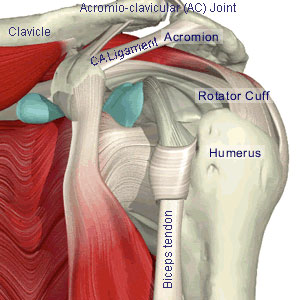
Common shoulder problems & procedures:
- Shoulder Arthroscopy

The operation is done by key hole surgery; usually through two or three 5mm puncture wounds. It involves examination of the shoulder joint using a tiny telescope with television camera introduced through a key hole.
Know More Launch Movie - Subacromial impingement / AC joint pain

The subacromial area lies between the top of the arm bone (humerus) and a bony prominence on the shoulder blade (acromion). The coracoacromial ligament completes the arch.
Know More Launch Movie - AC Joint Dislocation & Reconstruction
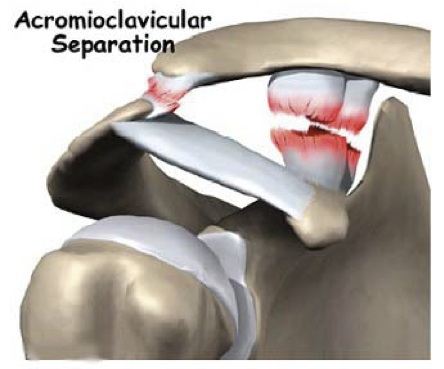
The Acromioclavicular joint (ACJ) is part of the shoulder complex. It is situated on top of the shoulder joining the clavicle (collar bone) to the scapular (shoulder blade).The joint can be separated (dislocated) as a result of injury. Ligaments are torn and in severe cases surgery is required to stablise the joint.
Know More - Rotator Cuff tears

The rotator cuff consists of four muscles and their tendons. These surround the ball of the shoulder joint.
Know More Launch Movie - Biceps Tendon Problems

The shoulder is a ball and socket joint. The socket of the shoulder is like a flat saucer, while the ball is a hemisphere. This arrangement of a shallow socket and a hemishperical ball allows for a large range of movement, but makes the joint prone to instability.
Know More - Frozen Shoulder

This technique is used in the treatment of frozen shoulders. A shoulder becomes frozen when the soft tissues around the joint become tight and short (i.e. contracted). This prevents the shoulder from moving and leads to the pain and stiffness with which you are familiar.
Know More Launch Movie - Shoulder dislocations & Instability

The shoulder joint is designed to give a large amount of movement. Therefore support from the ligaments and muscles is essential.
Know More - Shoulder Arthritis
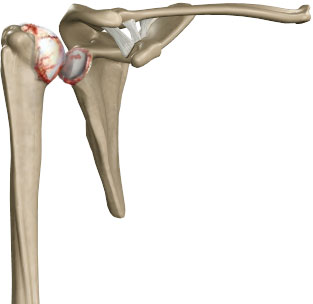
The arthritis may result from various reasons: Osteoarthritis, Rheumatoid Arthritis, Instability Arthropathy, Post-traumatic (due to fracture malunion) arthropathy, Cuff arthropathy and other.
Know More - Rotator cuff Arthropathy

Rotator cuff tear arthropathy is a problem that occurs when a patient has both shoulder arthritis and an irreparable rotator cuff tear. This condition results in a weak and painful shoulder joint. When the rotator cuff is torn, the shoulder can wear out, leading to shoulder arthritis.
Know More - Winging Scapula

The shoulder blade is a mobile structure, which is stabilised against the chest wall by a large number of shoulder muscles (Muscles of the shoulder girdle) working in tandem with each other. If this harmonious interaction between one or more of these muscles is disturbed, it can result in the shoulder blade becoming excessively prominent over the back, which is referred to as 'Winging of the Scapula'.
Know More - Shoulder Instability
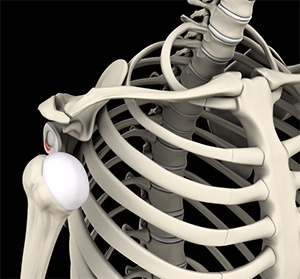
The shoulder is a ball and socket joint. The socket of the shoulder is like a flat saucer, while the ball is a hemisphere.
Know More Launch Movie - Calcific Tendonitis
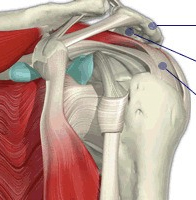
This condition develops as a result of calcium depositition within the substance of the rotator cuff tendons. The supraspinatus tendon is most frequently affected.
Know More - Biceps Tendo Lesions / SLAP tears
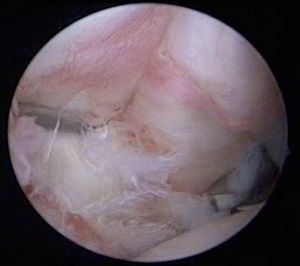
The shoulder is a ball and socket joint. The socket of the shoulder is like a flat saucer, while the ball is a hemisphere. This arrangement of a shallow socket and a hemispherical ball allows for a large range of movement, but makes the joint prone to instability.
Know More Fractures of the shoulder
- Fractures of the proxmimal humerus (top of the arm bone)
- Fractures of the Clavicle (Collar bone)
Advice sheet for injection therapy for Shoulder problems
Anterior Deltoid muscle rehabilitation for Massive irreparable Rotator Cuff Tears
